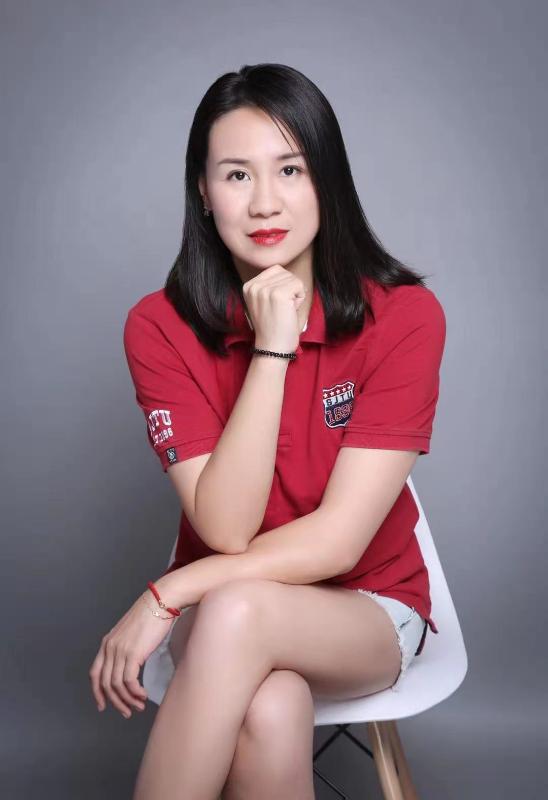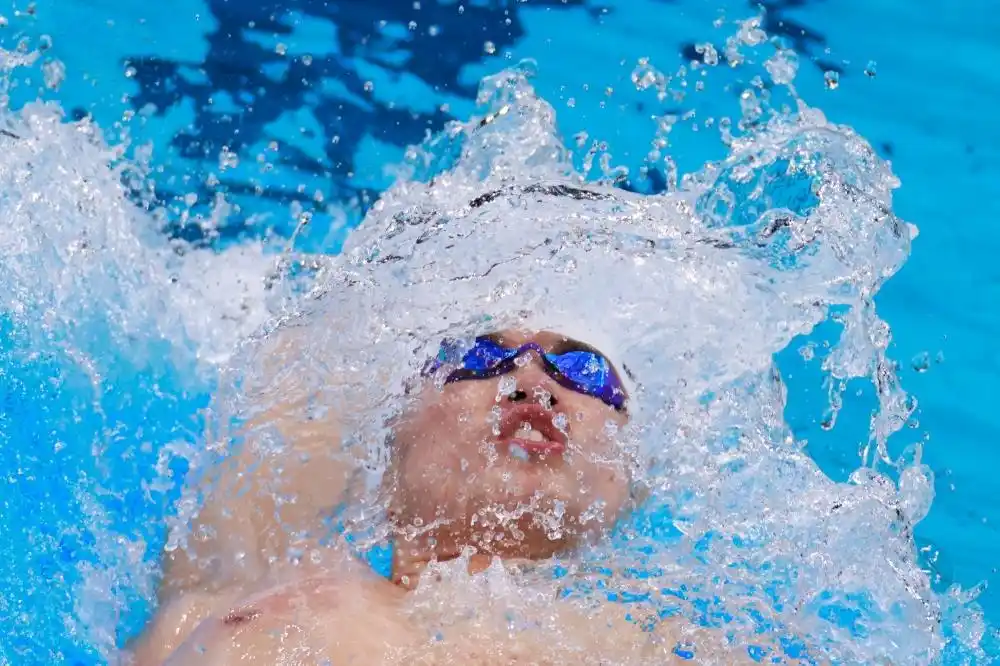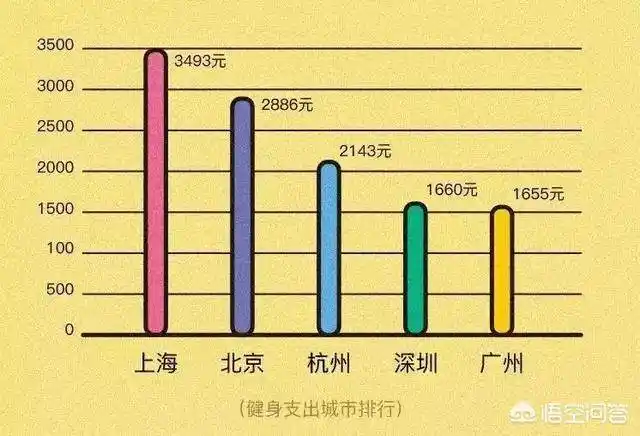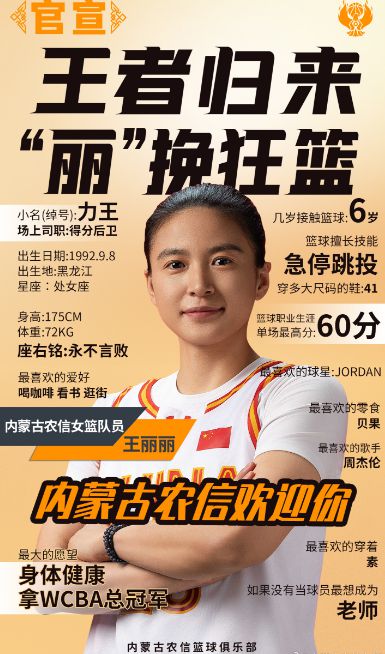复杂而可变的技术运动是足球的主要内容。在游戏中,您不仅需要使用统治球和争夺球的技术运动,而且还需要做可以主导球并为球而战的动作。正是这种进攻性和防御性的行动符合游戏规则,构成了当今复杂而可变的足球技术动作内容。因此,足球技术可以分为两类:球技术和球技术。
无球技术
开始:当场开始,在活动期间开始。
运行:快速运行,Sprint运行,曲线运行,线路运行,侧跑,RASP运行,后退运行。
紧急停止:正面紧急停止,转弯处紧急停止。
回转;向前和向后转。
假行动:没有球的假动作。
球技能
踢:对于脚步的前部,脚步的内侧,脚步的外侧,脚的内侧,脚趾和脚。
停止球:脚的内侧,脚的脚底,脚的前侧,脚的外侧,胸部,腹部,大腿和头部。
顶球:额头的前面,额头的侧面。
运球:脚步的内侧,脚步的外侧,脚步的前侧以及脚的内侧。
抓住球:用前枪阻止球,合理的碰撞,用侧面和后铲球抓住球,然后切断球。
假行动:带球的假动作。
投掷球:当场滚动球,奔跑并投掷球。
守门员技能:准备姿势,移动,选择位置,捕捉,捕获和捕获,击球,握住球,扔球,踢球。
无球技术分析
无球技术主要是指不将球结合的各种跑步,跳跃,移动和其他无球动作。根据统计,具有强球控制能力的球员只能控制球大约两三分钟。除了死球在各种情况下停止比赛的时间外,其余的大部分时间都花在没有球上的活动上。因此,在整个游戏中,合理的掌握和应用是否合理。
1。开始
2.从足球比赛开始是完成各种技术运动的基础,这在一定程度上影响了技术运动的质量。突然而快速的开始可以赢得完成各种球友好运动的时间优势。在紧迫的紧迫和猛烈抢劫的紧张辩护中,对手绝不能阻碍您接球。只有突然而迅速的开始,您才能暂时摆脱对手,并首先插入差距以接收和处理球。在连续而快速的合作中,只有当防守者突然开始并迅速开始时,他才能够密切关注对手并拦截或摧毁对手的受控球。因此,突然而快速的开始是超越对手或在短距离内凝视对手并抓住有利位置的有效手段。
3。从生物力学的角度来看,突然和快速的开始也提供了最大的冲动和动能,以尽快加速运行。
4。足球比赛中有很多开局,有些是静态的,有些在慢跑,有些正在跳跃和着陆,有些正在跌倒和攀爬,有些正在转弯,有些正在撤退,等等。但是,无论何种情况,您都必须注意,您都必须注意以下几点:以下几点:
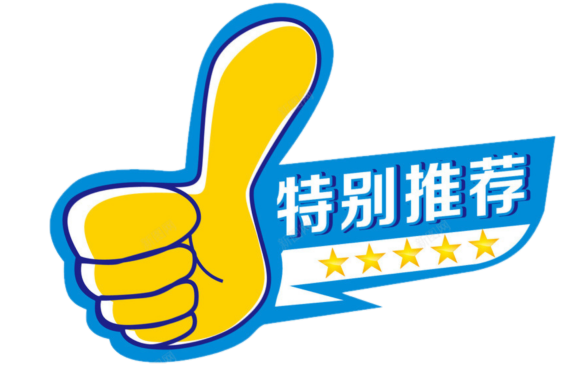
①身体的重心很低,直体迅速向前移动。
②快速步骤频率,小步长,快速而强大的后踏板。
③手臂用腿的力迅速向前和向后摆动。
④眼睛不仅应该注意周围球员位置的变化,而且还要考虑到球的运动。它有利于启动后的操作连接。
2。运行
跑步是人们的基本活动技能。在足球比赛中,只有掌握正确的跑步技能并使用各种合理的跑步方法,它们才能发挥积极作用。速度已成为现代足球的特征之一。快速跑步是“足球速度”的重要组成部分。在一场全面的足球比赛中,球员随着球的移动和变化而高速移动,例如进攻球员摆脱了接触并消除了差距,占据了有利的位置等。团队成员拦截和互动,互相补充,互相互动,挤压和凝视人数等,所有人都需要快速跑步。因此,跑步已成为足球中必不可少且重要的非球技术之一。
运行技术的主要运动是向后摇摆。后施加动作始于拉伸髋关节。当身体的重心离开支撑点时,您应该快速而有力地伸展髋关节和膝关节,并最终将脚趾从地面上推开。在后踏板的末端,应完全伸展臀部,膝盖和脚踝关节。向前的挥杆是当支撑腿开始向后推时,挥杆腿以膝盖接头向前,大腿驱动小腿向前摇摆,同一侧的臀部向前送去以向前驱动身体,大腿和大腿自然折叠以减少秋千并加速向前挥杆。当大腿达到最高点时,它们开始积极地向下压,小腿与惯性一起向前挥动,自然而积极地用前脚的脚底触摸地面。同时,上半身倾斜,手臂迅速而有力地向前和向后摆动,并与腿合作以迅速而有力地进行协调和朝向,以迅速向前推动身体。
在足球比赛中,随着进攻和防守的持续变化,需要球员充分掌握无球技能,例如慢跑,快速跑步,直线跑步,曲线跑步,线路跑步,侧跑,突袭,跑步和后退跑步。
(l)快速运行
快速运行是指运行速度。跑步速度由步幅长度和步幅频率确定。在保持一定的步幅宽度的同时,加快步幅频率是提高速度的重要方法。同样,在保持一定的步骤频率的同时,增加步幅也可以提高运行速度。但是,由于足球的情况不同,需要改变跑步和步步频率。例如,当接近对手和球并与对手竞争时,跑步的步幅应更小,步速频率应更快,重心应较低,并且身体的正向角度应更小。这将使您更轻松地控制身体的平衡,并且您可以进行各种技术运动,需要及时进行,并且您可以随时调整和更改运动的方向并在任何时候运行,因此您具有更大的灵活性来施加最大速度。尤其是在需要战斗,通过和射击的时候,更需要增加步幅并加快步幅频率的必要性;立即争取有利的机会。
(2)曲线运行
曲线跑步是绕过对手的球员,接收到来的球,切入并包围,拦截球,凝视对手的跑步方法。当曲线奔跑时,眼睛专注于周围的环境和球的发展,身体向内倾斜,内部肩膀低于外肩,内膝稍微向外向外,外膝略微向内弯曲,并将地面固定在内部脚部和外部脚部内部鞋底的外部。
(3)线运行
使用线程运行通常是进攻球员采用的一种跑步方法,以摆脱对手或交叉强化防守。
当在断线中跑步时,您的眼睛应集中在您面前的左右空空间上。当您突然从一个方向转向另一个方向时,上半身和头部应该突然沿预定的方向扭曲和倾斜,并且身体的重心将迅速移动到这一侧,与此同时,另一侧的脚应用力推动地面。
(4)侧身跑
横向跑步是促进对现场情况的观察,并随时准备参与进攻和防守的特定协调。
侧向跑步时,与球稍微向一侧转向一侧,您的脚趾面对跑步的方向,并向攻击和防守两侧的球员的发展以及球员的位置和活动视而不见,以便及时以特定的合作参与或采取个人行动。
(5)举起肩膀
Rag-Shoulder Running是一种用于限制与您并肩奔跑的对手的跑步速度,争夺位置或争夺球的方法。
rag-shoulder跑步是在与对手并肩奔跑时,突然伸出与对手接触的肩膀,同时,上半身被对角线插入对手和对手的同一侧的胸部,同时,同一一侧的手臂几乎停止降低对手的运行速度。
(6)向后运行

撤退通常是在对手越来越多的情况下进行防守。为了延迟对手的进步速度,他们等待机会参加比赛,或者当对手的球员威胁目标时,以密切关注对手并限制他们的活动时,他们经常使用后退。
当您向后移动时,重心略微下降并向后移动,导致身体向后倾斜一点。大步应该很小,步伐应该很快。推开地面后,您必须离开地面,但不要将其提起。手臂略微散开,自然摆动以保持身体平衡,眼睛固定在球上,对手球员的位置和活动以及团队成员的归来等,以确定您的下一步行动。
3。紧急停止并转弯
比赛中进攻和防守的持续变化以及球的位置也随时改变。为了摆脱对手或不被对手抛弃,团队成员有时需要突然停止跑步,突然停止跑步并立即转身或转身以改变运动方向。
在比赛中,运动员的紧急停车和转弯可以分为正面紧急停止,转过紧急停止,向前转弯并向后转弯。
(1)紧急停在前面
在紧急停止期间,身体的重心掉落并迅速向后移动。上身稍微向前弯曲,向前向前走,并用脚的所有手掌向前推动,使上身向后倾斜,向前刹车,然后弯曲另一只腿,然后打开以支撑身体的平衡,停止奔跑。
(2)转身并迅速停止
当转动并迅速停止时,重心会下降,上身向前弯曲,向前弯曲,朝着转弯的方向迅速倾斜。重心在转弯的方向上移动到相同的腿,弯曲膝盖并向外转动,将地面推到脚底外,指向转弯的方向,另一只腿迅速向前移动。脚底的内部积极推动地面,使整个身体向内倾斜,刹车向前伸出,然后停止奔跑。
(3)转身
转弯时,膝盖稍微弯曲,重心向相同的脚向相同的方向移动。上身向转向方向倾斜。在扭曲和推动另一侧的前脚时,您的身体迅速旋转,踢脚遵循了步骤。
(4)再次转身
转弯时,另一只脚向转弯的方向推动地面,重心向后移动。当身体开始向后旋转时,另一只脚向外抬起,向后逐渐向后,脚趾向后,身体向后转动。
4。假身体运动
在游戏中,为了摆脱对手的压力或抓住对手的控制球,经常使用快速而逼真的身体可见性,导致对手做出了错误的判断,从而导致做出了错误的行动或行动,并实现了预期的目的。
错误的行动将导致对手做出相应的反应。当对手做出相应的反应时,必须突然而迅速地采取虚假到真实的行动才能达到预期效果。因此,在快速伪造中自由地控制人体重心的运动是成功完成假动作的关键因素。
简而言之,无球技术是足球技术必不可少的一部分。练习时,您不仅必须正确理解运动的关键点,而且还必须结合必要的特殊身体健身和基于球的练习,并能够根据足球的特征完全掌握无球技术。
球形球技术分析 - 踢动作结构的分析
球形技术是在快速而激烈的对抗下准确完成技术运动的关键部分,并且是足球技术的重要组成部分。
1。踢足球
踢是一名运动员有目的地将球踢到预定的目的地,他的脚特定部分。因此,各种踢球的动作总是与有目的的动作相关联,从而形成了以不同的脚步踢足球的完整技术运动。
踢足球是足球中最重要,最常用的基本技术。在游戏中,每个球队通常将球传球约350至500次。游戏的双重力量每5到7秒平均。在游戏中,踢足球主要用于传球和射击,这是组织进攻和防守的主要手段。运动员足球技能的质量直接影响传球,射击和组成策略的有效性。因此,运动员掌握足球技能的能力将对球队的运动技能水平产生重大影响。
(l)分析踢动作结构
有很多方法可以踢球,而且动作是不同的,但是每种踢的方法都包括奔跑,支撑脚的位置,踢腿挥杆,触球并用球踢球。正是这五个链接构成了踢运动的完整结构。这是在脚步前踢一个固定球的一个例子。对踢足球的整个过程进行结构分析。
脚步的前踢是指第一,第二,第三和第四个meta骨体以及meta骨的基部,即脚步的中部。当脚的meta骨弯曲并稍微向外转动时,形成了一个较大的平面,通常称为脚步的前部。用这部分击球称为将球踢在脚的前部。
①跑步:跑步是指准备踢足球之前的几个步骤,这是整个踢足球的第一部分。
功能:跑步辅助的主要功能是调整人和球之间的方向和距离,以便促进挥杆的腿更好地发挥力,增加击球的力量,并且跑步辅助的最后一步应该稍大,以获得一定的初始速度并提高踢腿的挥杆振幅和速度,同时刹车前向身体驶向身体的前进。
行动过程和要求:第一件事是判断良好的距离。奔跑的方向应与击球球的方向一致,并直线运行。
运动应放松和自然,并均匀地大步。整个运行是一个加速过程,尤其是最后两个步骤必须是活动且快速的。为了提高踢腿的挥杆和挥杆速度,跑步的最后一步必须稍大。支持脚的步骤选择和着陆点,以支持准确的步骤选择。您不仅应该在踢足球之前获得一定的前锋冲动,而且要避免过早匆忙并减少踢足球时向前踩踏的角度,您应该在最后一步中使用大步,并且在支撑脚降落时必须积极地着陆。
容易产生的错误:初学者在步骤点上没有做出良好的判断,最后一步并不准确地降落脚。此外,如果您不掌握跑步速度,那么很容易向前赶得太快而无法影响您的腿或不加速,这将影响正确的踢球运动。
②支撑脚的位置:最后一脚脚在升级中的位置是踢足球时的支撑脚位置。
功能:支撑脚姿势是运动员重心踢足球时的稳定支柱。只有通过稳定地支撑人体的重心并在踢腿的挥杆方面具有牢固的焦点,最大的挥杆速度才能最大化。因此,支撑脚在支撑身体的重心并在踢球过程中保持身体平衡发挥作用。
动作过程和要求:在跑步的最后一步中,必须将支撑脚踩在球的前轴的平行线上。脚和球之间的距离约为10至15厘米,脚趾正朝向球的方向。当身体向前移动时,支撑脚以滚动的方式从脚跟到前脚。膝关节略微弯曲,膝关节之间的角度在135°至150°之间。它的功能:首先,减少腿部腿部引起的膝关节的挤压和影响,从而使sartois肌肉,拉伸筋膜拉塔,股骨肌肉肌肉等可以承受由制动效应造成的影响的一部分。第二个是减少制动。如果直腿支撑不可避免地会引起相对较大的反作用力,因为膝关节轻微弯曲起缓冲作用,则可以减少支撑过程中地面的反作用力。它降低了制动效果。
容易产生的错误:初学者不会准确地降落在支撑脚上,并且可能发生以下三个错误:首先,支撑脚的着陆点位于前面,导致无法完全加速腿的挥杆。小腿开始加速并将其踢到球的上背部,导致力线在击球点上与地面的一定角度达到一定的角度,并且球的方向不是向前,而是向前和向下。其次,支撑脚向后掉落,小腿的秋千超过了身体的重心,导致身体的重心落在后面,导致臀部坐下来靠在向后倾斜,脚撞到球下的球点;使球暴露于更高。第三,支撑脚距离球的一侧很远,即脚和球之间的距离小于10厘米或大于15厘米,这会根据人体的结构特征的特征破坏了所需的合理位置。热点不是球的后部中心,而是左右。
swing踢腿:踢腿的挥杆是支撑脚向前走的运动,最后一步跑出地面,支撑脚向后摆动,而臀部接头则是轴,大腿驱使小腿从向后向前向前摇摆。
功能:踢腿的挥杆是击球力量的主要来源。踢腿的挥杆速度和挥杆直接影响击球力。根据力学原理:力的大小取决于线性速度的大小。因此,我们必须增加击球的强度。有必要加快腿的挥杆,尤其是小牛的快速前向挥杆。
动作过程和要求:踢腿的挥杆可以分为两个阶段:自然的后摆和加速前向挥杆。
自然的后卫阶段;随着支撑脚的降落,挥杆的腿自然会用髋关节作为轴自然向后摇摆,小腿自然向后弯曲,踝关节放松。
加速前向挥杆阶段。当大腿向后摆动时,骨骼肌肉,股四头肌,fescia latis,sartois等都会极度延长,功能性收缩开始,因此踢腿可以在大腿上从向前向前摆动。当大腿向前驱动小腿时,除了上述肌肉艰苦的收缩外,the骨围绕骨的肌腱和韧带张开并收缩,从而导致腿的挥杆速度迅速加速。这就是小牛应以爆炸速度加速以击球的速度。这个阶段是确定台球的强度和准确性的关键阶段。
容易出现的错误:首先,应与支撑脚陆地同时进行后摆腿运动。有时初学者在开始向后摆动之前很容易地使支撑脚踩在地面上。这使得一个连贯而完整的动作完全分开,从而破坏了动作的持续协调。其次,当大腿向前挥杆时,小腿不会执行爆炸性加速或太早加速,导致错误的动作是用直腿踢球。第三,在挥动腿时,应将髋关节用作轴,大腿应驱动小腿垂直挥动。因为支撑脚的脚趾不在球的方向上对齐,所以挥杆方向是不正确的。
④脚触摸球:脚触摸球包括脚部和球的一部分,在击球时脚踝关节拉伸运动。
功能:用脚触摸球是确定击球方向和强度大小的准确性的关键。整个身体的力量和协调(肌肉的放松和张力)集中在击球的那一刻,导致球从静止状态迅速飞出。
动作过程和要求:首先,当小腿加速前向挥杆时,长长的顽固性肌肉会收紧并收紧脚踝以使脚保持笔直,并用脚步的前部击中球的背部和中部。击球时的力是沿着球的中央轴向前沿球向前(除了踢弧球除外)。其次,根据机械对象的弹性碰撞原理,生成力的大小与碰撞时间成反比,并且与对象的质量和速度差成正比。因此,为了使球击球强度和准确,有必要缩短腿部和球之间的接触时间,即加快挥杆速度并增强脚表面的硬度,这是常用的术语“快速挥动腿并伸展脚表面”。 '第三,击球时身体的臀部接头必须垂直在球上方,这是脚接触球的理想时机,因为如果髋关节不垂直垂直,而是垂直线的前面上方,则小腿不能迅速向前摆动。如果髋关节落在球的垂直线上,则大腿的前向挥杆已经完成,小腿开始向上挥动,导致球被击中更高。

容易出现的错误:首先,在击球的那一刻必须很重要。因为拧紧脚踝不仅可以控制球的方向,还可以增加脚表面的硬度并增加击球力。如果脚踝没有拧紧,则会导致球很弱。其次,当击球时,支撑脚向前或向后,导致髋关节不再垂直在球上方,因此脚不能击中球的后部,而是后部或下部的上部,影响击球效果。第三,热点是左右(除了踢弧球除外),导致力的方向向左或向右移动,并且无法沿正确的方向移动。热点在球的左后背,力通过球的中心向左延伸。作用在球的左后侧的力通过球的中心向前延伸。 ⑤踢球后的后续运动:踢球后的后续运动是指踢腿的运动继续向前挥动,并在接触球时以相同的挥杆速度发送臀部。
功能:缓解踢腿的快速前向旋转引起的前进惯性,以保持身体平衡,同时增加球输出力并连接到下一个动作。
动作过程和要求:在脚击球之后,由于惯性,挥杆腿应继续向前挥动,身体的重心随着趋势的趋势向前移动,踢腿的另一侧臂自然会向前挥动,并且同一侧臂向后旋转,以保持身体平衡并促进下一个动作的连接。
容易出现的错误:首先,有意识地阻止小腿的前向挥杆,影响球的力量。其次,身体不会随挥杆的腿前进,这会影响与下一个运动的连接。
球技术分析 - 踢足球的方法
(2)如何踢足球
主踢包括在脚内踢,踢在脚的前部,踢在脚的内部,在脚的外侧踢,踢了脚趾并踢了高跟鞋。
①脚的内部踢:这是一种使用三角形部分,由脚部内侧的三角形部分,snadosus和Colcaneal骨头组成,与球接触球。
特征:脚和球具有较大的接触区域,并且球相对稳定且准确。球输出功能不力。
基本运动技巧:打固定球时,直奔跑步,支撑脚,在球侧约15厘米处,并稍微弯曲膝盖。在支撑脚到地面的同时,踢脚的腿以髋关节作为轴从后向向前摆动。在向前的秋千期间,弯曲膝盖并向外转。踢脚的内部正朝向球的方向。小腿加速前向挥杆,脚趾略微抬起,脚的脚底与地面平行,并用脚的内部撞到球的背部和中间。
在接触球的过程中,有两种方法可以将球踢到脚的内部:一个是推踢。当脚踢脚接触球时,踢腿应该继续向前挥动,以便踢脚会与球接触很长一段时间,并且球将很光滑。另一种击打和踢的方式。踢球时,踢腿的大腿挥杆并不多,但是小腿迅速向前挥动以击球。击球后,小牛突然停止向前摆动。此动作的接触时间很短,运动很强大。
很容易犯错:首先,踢腿没有向外旋转膝盖,脚趾没有抬起。其次,腿部挥杆动作太紧张了,它变成了直腿的动作。第三,踢脚的鞋底。
②脚步的前踢:这是一种踢脚的方法,它在脚步的前面使用了cunei和meta骨的末端。踢腿的特征很大,具有快速的挥杆速度,具有很大的踢力,球的性能有很小的变化,并且球的球方向相对较小。
基本运动技巧:打固定球时,跑得直奔,最后一步稍大,您必须积极触摸地面。支撑脚在球的侧面约为10到12厘米,脚趾面向球的方向,膝盖接头弯曲,踢腿是支撑脚和向上奔跑,向右摆动并弯曲小腿的最后一步。在将脚支撑在地面的同时,将髋关节作为轴作为轴,大腿驱动小腿从后面向前摆动。当膝盖旋转到球正上方的点时,小腿爆炸,挺直,紧紧地握住脚趾,并用脚步的前部击中球的背部和中部。踢腿继续用球向前抬起膝盖。
犯错很容易:首先,支撑脚向后放置,导致身体在踢球时向后倾斜,而踢的后部和下部太高了。其次,当踢腿向前摆动时,小腿摆动过早,导致直腿踢球并使球虚弱。第三,腿的方向不正确。第四,踢足球时,我担心我的脚趾会碰到地面,我不敢拉直我的脚,使我的脚趾碰到了球。
在腿后部打固定的球是初学者必须严格掌握的基本技术动作。在游戏中,您经常使用脚步踢回弹,空气球,倒钩球和摩擦球。以下是以下对基于固定球的掌握的动作的介绍:
When kicking a rebound ball on the front of the instep, you must accurately determine the landing point, landing time and rebound route of the ball. The body is facing the rebound direction of the incoming ball and support the foot on the side of the ball. When the ball is about to land, the kicking leg's calf swings forward rapidly. When the ball rebounds from the ground, hit the back and middle of the ball with the instep. The easy mistake in this action is that it is inaccurate in judging the landing time of the ball, swinging its legs too late, and hitting the ball at the back bottom of the ball, and hitting it too high.
When kicking an air ball on the front of the instep (playing an air ball on the side), you must first judge the running route of the ball and determine the hit point, and make the body side facing the direction of the ball, support the foot and take a step forward, point the toes in the direction of the ball, and lean the upper body toward the support foot. The thigh of the kicking foot drives the calf to swing rapidly in the direction of the ball, and use the back and middle part of the ball on the front of the instep, and twist the body in the direction of the ball when swinging the leg to kick the ball. At the moment of kicking the ball, your eyes always look at the ball, and your body is facing the direction of the ball. After playing the ball, face the direction of the ball. The easy mistake of this action is: swinging your legs too early or too late, causing a missed kick. The support toes did not face the direction of the ball, which restricted the body's twist. The upper body is not tilted enough, causing the legs to swing diagonally upwards when kicking the ball, hitting the middle and lower part of the ball, making the ball appear higher.
When kicking the hook ball upside down on the instep, the support foot first step forward, bend the knee joint, lean back on the upper body, and swing the ball leg upward with the hip joint as the axis. When the ball falls to the front of the head, kick back with the instep. This action is easy to make mistakes: the upper body is not leaning back enough and the knee joint is too straight, which causes the kicked ball to run upwards not to the back but to the upwards.
When the instep is raised and kicked the hook ball upside down. First judge the running route of the incoming ball and determine the hit point, then kick the ball up and jump, while swinging the other leg up, so that the body can tilt back and look at the incoming ball. While the other leg is hem, the kicking leg uses the thigh to drive the calf to swing rapidly, and the legs cross in the air in a scissors-like cross, kick the back and middle part of the ball with the instep. After kicking the ball, the arms are slightly bent, the palms are supported downward, and the fingers point in the opposite direction of the ball, and the elbow is bent. Then the back and arms hit the ground one by one. This action is easy to make mistakes in not daring to jump or not tilt backward after jumping.
When you put the ground on the ground with your palm, the finger direction is incorrect, which can easily cause contusions in the wrist.
When rubbing the ball on the front of the instep over the top, the movement of swinging the legs is to use force from back to front and down, rub the soles of the feet against the ground, insert the toes into the bottom of the ball, and kick the bottom of the ball, so that the ball swirls out from the toes through the feet forward and upward. This action is easy to make mistakes in the fact that when playing football, the toes do not insert the bottom of the goal, resulting in incorrect hitting points.
③ Inner kicking: It is a kicking method that uses several cunei bones and ends of the phalanx on the inner side of the instep. Characteristics of the kicking leg is large, has a fast swing speed, and has a strong kicking force. Due to the flexibility of running-up direction and supporting foot selection, the direction of the ball changes greatly. Therefore, you can kick out straight balls, long-distance arc balls, etc., which can also facilitate turning and kicking.
Basic movement tips: When playing a set ball, run at a diagonal line, and the direction of the run-up is at a 45° angle to the direction of the ball. The support foot is actively grounded with the outer edge of the sole of the foot, step 20 to 25 cm behind the side of the ball, bend the knees, point the toes of the support foot in the direction of the ball, and tilt the body slightly toward the support foot. When the support foot is on the ground, the kicking leg is on the hip joint as the axis, and the thighs drive the calf to swing from back to forward. When the body turns toward the direction of the ball and the knees swing right above the inside of the ball, the calf makes an explosive front swing, the toes slightly turn outward, the foot surface is straight, the toes are tightened, and the toes are pointed diagonally below. The back and middle part of the ball is kicked with the inside of the instep (when kicking a high ball, the middle and lower part of the ball is hit), and the kicking leg continues to swing forward with the ball.
It is easy to make mistakes: First, the support foot is positioned in a backward position, and the upper body is leaning back when kicking the ball, which is easy to kick the ball high. Second, the toes of the kicking football are not rotating outwards enough and the contact area is incorrect. Third, there is no straight swaying the leg in the direction of the ball, forming an arc-slashing action, so that the ball point is outward.
Similarly, kicking a set ball on the inner side of the instep is a basic movement that beginners must master. To improve, let's use the inner side of the instep to kick the top ball, the arc ball and the turn to kick the ball as follows:
When you rub the inner side of the instep and kick the ball over the top, the action method is basically the same as kicking a set ball. Just support your feet on the side and back of the ball. Do not straighten the ball too much. The back and lower part of the ball is kicked, and the ball will be cut slightly to make the ball fly forward and swivel. The kicking foot does not move with the ball. This action is easy to make mistakes in that the kicking foot does not insert the bottom of the goal, and the hitting point is not at the back and bottom of the ball, so that the ball cannot swivel.
When you turn around and play the ball on the inside of the instep, the last penultimate step of the run-up should be slightly opposite to the ball, that is, step forward to the side of the ball. When you kick off the ground in the last step of the run-up, you jump slightly, and at the same time, your body turns toward the ball, support your feet toward the ground with the soles of your feet, point your toes toward the ball, lean forward on the upper body, and bend your knee joint. While supporting the foot to the ground, the kicking leg is based on the hip joint as the axis, and the thighs drive the calf to swing from behind to forward. When the knees are close to the inside of the ball, the calf makes an explosive front swing, turn the feet slightly outward, stretch the face of the feet straight, clasp the toes tightly, point the toes below, and hit the back and middle of the ball with the inner part of the instep, and continue to swing forward with the ball. This action is easy to make mistakes in that the toes of the support foot do not point in the direction of the ball. Turning around and kicking the ball are incoherent. While turning around, the swinging legs did not actively follow the swing forward. When turning around, the upper body did not lean forward.
When kicking a curved ball on the inner side of the instep, use the back and middle part of the instep to kick the ball on the inner side of the instep. The direction of the leg swing does not pass through the center of the ball. At the moment of kicking the ball, the ankle joint turns inward and rises, so that the ball rotates sideways and runs along a certain arc. This action is prone to mistakes in the ankle joint exerting too much or too little force.
④ External kicking of the instep: It is a kicking method to touch the ball with the external measuring part of the instep.
Features: In addition to the characteristics of kicking the ball on the front of the foot, it is the main method of kicking various distance arc balls, plucking and cutting balls due to its advantages of high flexibility in the ankle and more changes in the direction of the legs when playing.
Basic movement tips: When playing a set ball (straight ball), the running assist, the position of the support foot and the swing of the kick leg are basically the same as the kicking ball on the front of the instep. Just touch the ball with the outside of the instep. When the knee of the kicking leg is swung to the top of the ball, when the calf performs an explosive front swing, the knees and toes turn inward, the face of the foot is straight, and the toes are tightened, and the back and middle part of the ball is kicked at the outer part of the instep. The kicking leg continues to swing forward with the ball.
Easily made mistakes:
First, when playing football, the knees and toes do not rotate inward enough, resulting in incorrect contact with the ball.
Second, support the foot backward, causing the body to lean back when kicking the ball, and the back and lower part of the ball, so that the ball is too high.
Kicking a set ball on the outside of the instep is a basic move that beginners must master, but in the game, they often use arc balls or plucks on the outside of the instep. In order to further understand the methods of kicking the ball on the outside of the instep, the following two methods are introduced as follows:
When kicking an arc ball on the outside of the instep, the support foot is about 15 to 20 cm behind the side of the ball, and the ankle of the kick foot is used force, and the rear middle part of the ball is kicked on the outside of the instep. The direction of the swinging leg does not pass through the center of the ball, and continue to swing to the front of the side of the support foot to increase the rotation of the ball. This action is easy to make mistakes in that the ankle of the kicking foot is not exerting enough force, and the direction of the swing leg is close to the ball mandrel.
When kicking a pluck on the outside of the instep, the kicking leg swings quickly with the knee joint as the axis. When hitting the ball, the ankle turns quickly to bounce the ball out and the kicking foot quickly retracts. This kicking method allows the ball to be quickly plucked to the outside or in front of the kicker's foot.
⑤ Toe kick: It is a kicking method that uses the toe to touch the ball.
Features: The kicking legs have a large swing amplitude and fast swing speed, the focus point of kicking the ball is concentrated, and the ball is quickly and powerful, but because the toes and the ball are small, the accuracy of the ball is poor.
Basic movement tips: The toes kick the ball and the front kicking of the instep are roughly the same, and the foot is supported to step on the side and back of the ball.
版权声明:本文内容由互联网用户自发贡献,该文观点仅代表作者本人。本站仅提供信息存储空间服务,不拥有所有权,不承担相关法律责任。如发现本站有涉嫌抄袭侵权/违法违规的内容, 请联系本站,一经查实,本站将立刻删除。如若转载,请注明出处:http://www.hnjuzu.com/html/tiyuwenda/9489.html



